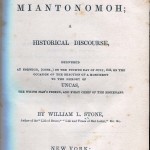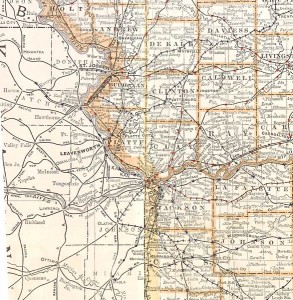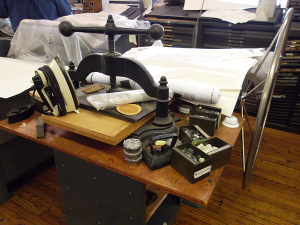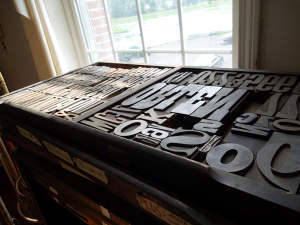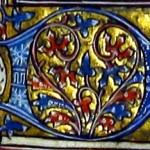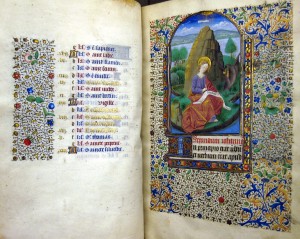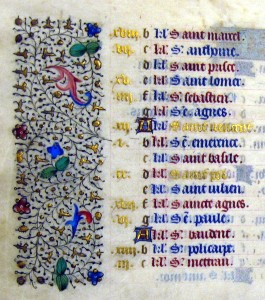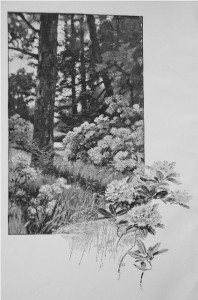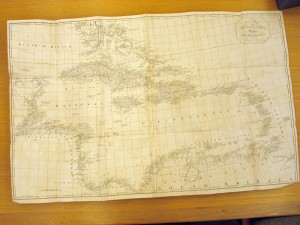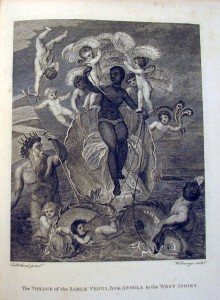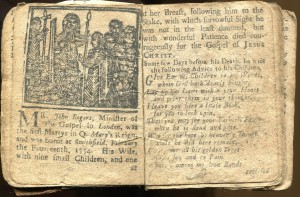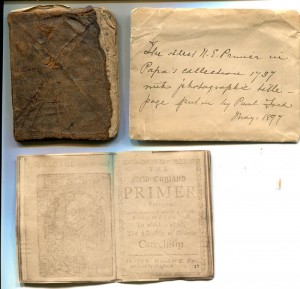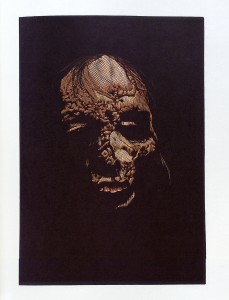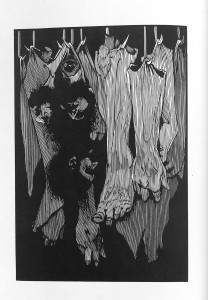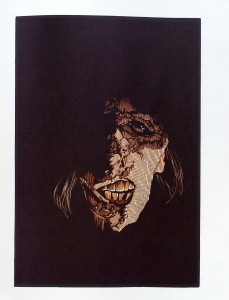[Posted by Emma Sternlof, ’13, a student in Jonathan Elukin’s History of the Book class. The class was allowed the signal honor of browsing the stacks to find their gem]
 Even on my second visit, wandering through the basement archives of the Watkinson Library was a bewildering, bewitching experience. I slowly meandered past shelves of American novels, astronomy guides, and fairy tales before turning toward the stacks dedicated to Native American history. I’m planning a thesis on the history of the Brotherton Indians, a group of Christian Native Americans drawn from several New England tribes, and I hoped to discover some helpful texts. A small dark book, no longer than my hand, caught my eye. Its worn spine proclaimed the title Uncas and Miotonomah in gilt. Born and raised in southeastern Connecticut, I recognized the first name as that of a famous Mohegan chief from the 17th century. Intrigued, I brought the book upstairs to the reading room for further examination.
Even on my second visit, wandering through the basement archives of the Watkinson Library was a bewildering, bewitching experience. I slowly meandered past shelves of American novels, astronomy guides, and fairy tales before turning toward the stacks dedicated to Native American history. I’m planning a thesis on the history of the Brotherton Indians, a group of Christian Native Americans drawn from several New England tribes, and I hoped to discover some helpful texts. A small dark book, no longer than my hand, caught my eye. Its worn spine proclaimed the title Uncas and Miotonomah in gilt. Born and raised in southeastern Connecticut, I recognized the first name as that of a famous Mohegan chief from the 17th century. Intrigued, I brought the book upstairs to the reading room for further examination.
The book’s title page sums up its contents: Uncas and Miantonomoh; A historical discourse delivered at Norwich (Conn.,) on the fourth day of July, 1842, on the occasion of the erection of a monument to the memory of Uncas, the white man’s friend, and first chief of the Mohegans. The discourse was delivered by William L. Stone, a man considered an expert on Native American history at the time. He dedicated the book to “the ladies of the city of Norwich,” who organized the monument ceremony. In his introduction, Stone explains that he got completely carried away in the course of researching his speech. According to him, its excellent reception inspired him to publish an expanded version in 1842. Within the book, Stone praises Uncas for his nobility, noting that he possessed courage “of a lofty and chivalrous character” (153). He contrasts Uncas’ loyalty to the white settlers with the duplicity of Miantonomoh, a Narragansett chief who conspired against the colonists.
As I glanced through the book’s appendix, I was very excited to discover that the section entitled “Of the New England Indians in General” included information about Samson Occum, a prominent Mohegan preacher during the late 1700s and a possible subject of my thesis. Stone offers details about Occum’s groundbreaking preaching tours of England, his efforts to support himself financially, and his well-attended funeral; he also mentions a source, “Allen’s biography,” which I hope to track down for my own research. The appendix also includes the June 6, 1659 deed recording Uncas’ sale of Norwich to white settlers, reproducing the signature marks of Uncas and his sons Owaneco and Attawanhood. Another interesting and pertinent section, “Of the Pequods,” quotes a 1832 letter: “There is still a remnant of Pequods still existing… They are more mixed than the Mohegans with negro and white blood, yet they are a distinct tribe, and still retain a hatred for the Mohegans” (204).
 I was more than pleased with my discovery, but this little book had more surprises in store. Throughout its pages, a previous reader penciled in several notes, often challenging Stone’s perspective. At one point, Stone discusses the devastating Pequot War of the 1630s. Describing the capture of a Pequot band by colonial forces, he writes, “… the women and children were spared” (75). “Sent captive to the Bermudas!” rejoins the incredulous reader in his marginal note. On one of the blank pages at the end of the book, the same pro-Pequot reader carefully hand-wrote a highly amusing account of his encounter with Stone. I can’t resist giving the entire remarkable passage here:
I was more than pleased with my discovery, but this little book had more surprises in store. Throughout its pages, a previous reader penciled in several notes, often challenging Stone’s perspective. At one point, Stone discusses the devastating Pequot War of the 1630s. Describing the capture of a Pequot band by colonial forces, he writes, “… the women and children were spared” (75). “Sent captive to the Bermudas!” rejoins the incredulous reader in his marginal note. On one of the blank pages at the end of the book, the same pro-Pequot reader carefully hand-wrote a highly amusing account of his encounter with Stone. I can’t resist giving the entire remarkable passage here:
“In the summer of 1842 or 4, I met Col. Stone at Stonington, in company with Hon. A.H. Tracy (of western New York). In conversation with Mr. T., I had expressed an opinion of Uncas, as unlike as possible to that which Col. Stone’s researches had apparently led him to form, speaking of him as the most contemptible, worthless, and treacherous of all the Indians of Conn. Mr. Lacey, laughing, called the Colonel’s attention to my heresies. “So you don’t believe all I have said of Uncas?” he asked. I was slightly ‘cornered,’ but put the best face on it. “No, sir: I do not believe any of it. I think Uncas was a very miserable Indian, hardly worth talking about; and not nearly deserving of a good monument as his father-in-law, Sassacus.” “Well! I do not know but it’s so,” said Col. S., “but see here my young freind [sic,] if the ladies of Norwich should send for you, to come and make a speech over Uncas’s grave, and they were all present to hear you, do you think it would be well to all the truth about him? I couldn’t do it.” “No,” I replied, “I did not expect it from you. All that I object to is, that you have printed the blarney, and tried to make it pass for history.”
This unofficial afterword brings the author and his reader to quirky, quarrelsome life like no published postscript ever could. Almost 170 years ago, another historically-minded reader challenged on paper and in real life what he saw as a distortion of the past. His interjections inspire me to read critically and thoughtfully as I sit in the Watkinson now.



